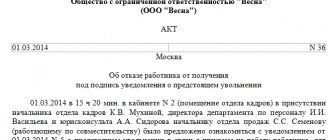For which enterprises are shift schedules relevant?
The nuances of production make such work relevant for several areas:
- Large industrial centers, groups of factories, enterprises.
- When equipment stops, serious financial losses occur. Enterprises may employ hundreds or thousands of employees.
- Public service sector.
- The labor regime is introduced to avoid loss of profit.
- Emergency services on which many other factors and lives depend
- Transport sector.
It is necessary to correctly formulate a schedule so that it gives the desired results. Saturday and Sunday, even holidays can be working days, this is stated in Part 3 of Article 111 of the Labor Code of the Russian Federation.
Flexible working hours in an employment contract: sample
• Number of shifts;
One of the categories of activity regulated by an employment contract is shift work. The main points in the document are filled out in a standard way.
The employer needs to indicate the full name of the employee and the name of the enterprise/employer, indicate the date and place of conclusion of the agreement, and emphasize the job responsibilities of the subordinate depending on the field of activity.
You also need to indicate the duration of the contract. Of course, when indicating the exact expiration date of the document - a fixed-term contract, you need to justify in writing the reasons why you are hiring a temporary worker (for example, in connection with maternity leave of a permanent employee or to perform seasonal work).
An employment contract in which the shift is not fixed is unlikely to be recognized as valid. You must outline all the details in writing.
1. If the production process takes longer than the permissible working day for an employee;
2. If an increase in production volumes is necessary.
In this case, the employer needs to indicate not only the reason, for example, that it is necessary to provide round-the-clock security of the facility or provide medical assistance, but also carefully plan the work and rest schedule so as not to violate any legal norms. A shift employment contract with an irregular work schedule must contain information on the accrual of bonuses or bonuses for overtime work.

If you signed a document with your subordinates before making the transition to a shift work schedule, then you do not need to sign an employment contract; shift work can be included in the existing agreement in accordance with Art. 72, 74 Labor Code of the Russian Federation. Record the necessary changes and coordinate them with employees.
• Issue an order to introduce a shift schedule;
• Make changes to the Labor Regulations (Article 100 of the Labor Code of the Russian Federation).
The condition for introducing a shift schedule must be included in the TD on the basis of Art. 100 and art. 57 Labor Code of the Russian Federation. The order can be drawn up in free form, the main thing is to indicate the positions to which the new regime will be applied.
1. It is customary to distinguish three shifts - day, night and evening. If more than 50% of an employee’s working time falls on the period from 22:00 to 6:00, then this is a night shift, and the one preceding it is considered an evening shift;
2. The weekly rest of employees performing their duties based on an employment contract (shift schedule) must be at least 42 hours;
3. The legislator prohibits working 2 shifts in a row; there must be rest between them;
4. If a shift falls on the day before a public holiday, its duration should be reduced by 1 hour.
When hiring new employees for shift work or when transferring subordinates to a new schedule, the employer needs to take into account restrictions regarding certain categories of persons. For example, night shifts are prohibited for women who have children under 3 years of age, disabled people, minors, and persons who are guardians of disabled people.
The shift schedule is regulated by law, namely Art. 372 of the Labor Code of the Russian Federation (Part 3 of Article 103 of the Labor Code of the Russian Federation). When introducing it into an organization, it is required to strictly comply with the norms and conditions of the above section of the Labor Code of the Russian Federation.
The rules for operating in this mode are spelled out here quite thoroughly and clearly. There is no point in listing them in this article, but some simply need to be emphasized:
- the weekly working hours in the sum of all shifts should not exceed forty hours;
- every shift people should be given a lunch break (its duration is determined individually - from 30 minutes to 2 hours);
- employees must be provided with uninterrupted rest for 42 hours every week;
- the employer is obliged to indicate to employees that it is inadmissible for them to perform their duties in two shifts in a row (except in emergency cases) - and strictly monitor this.
If an organization feels the need to use a shift schedule for different categories (positions) of employees, then for each of them the duration of the shift can be determined separately (such situations occur in transport companies - one work mode is used for drivers, another for dispatchers, and another for service personnel). third).
When creating a schedule, one more important point should be taken into account - if most of it falls at night, then the shift should automatically be reduced by an hour.
All other working conditions must also comply with the law, including in matters relating to the payment of wages, provision of sick leave, vacation, etc.
The calculation of remuneration for a shift schedule is somewhat different from the standard one. The specificity here is that the number of working hours according to the regime established at the enterprise may differ from the norm established by law, both upward and downward (the so-called planned overtime or underwork).
To ensure that there are no errors in salary calculations, at the end of the accounting period, the following parameters should be reconciled: the number of working hours in accordance with the norm and their number, based on real indicators. If, when comparing, the second indicator is greater than the first, you will need to calculate and pay the employee extra for overtime.
If an employee’s shift falls on a day off, then it is paid as usual (this is justified by the peculiarities of the shift conditions). If he is forced to work on a holiday (state non-working days are specified in the Labor Code of the Russian Federation), then he must be paid at the appropriate standard rate, i.e. in double size.

1.1. The Employer undertakes to provide the Employee with work for a specified labor function, to provide working conditions provided for by labor legislation and other regulatory legal acts containing labor law norms, a collective agreement, agreements, local regulations and this employment contract, to pay the Employee wages on time and in full. , and the Employee undertakes to personally perform the labor function specified in this employment contract and to comply with the internal labor regulations in force at the Employer.
_________________________, hereinafter referred to as the "Employer", represented by _________________________, acting___ on the basis of ___________________, on the one hand, and _________________________, hereinafter referred to as the "Employee", on the other hand, have entered into this agreement as follows:
- Continuous production cycle (large factories and industrial companies). Stopping the equipment in such cases threatens with large material losses that will have to be incurred due to repeated starts and stops of the machine.
- The company operates in the service sector (convenience stores, gas stations). In these industries, shift work is quite common; companies choose this mode so as not to lose revenue from potential customers who may need something both day and night.
- Emergency services on which people's lives depend. Fire, ambulance, and police must work continuously to quickly respond to emerging threats and help people in trouble.
- Transport (railway, airports). People constantly need to travel and fly, at any time of the day, so employees of the organization cannot take one day off for everyone at once.
Most organizations operating in Russia use a five-day workday with an 8-hour working day; according to this standard, employees work on weekdays and then rest on Saturday and Sunday. But some enterprises cannot stop the production process, they are forced to work around the clock and every day, then the manager has to introduce a shift schedule.
Hello! I have a question regarding my employment contract. Is it necessary to include the operating mode in it? We are now hiring two permanent sellers on a 5/2 schedule, and in a couple of months we plan to transfer the store to work seven days a week. To do this, we will hire two more sellers on a shift work schedule, and these will also be transferred to shifts.
Dear Alevtina, there is no need to confuse one with the other. A shift schedule involves working in several shifts, when the same employee may have different working hours on different days. And the 5/2 shift schedule regulates which shift the employee works on for five days in a row, but after the weekend the shift changes.
If you don’t have shifts at your company, then you can’t set a shift schedule. Again, it is impossible to write in the contract what is not there! When you definitely decide to change your working conditions, then you will make changes to your employees’ employment contracts and familiarize them with the new shift schedule, against signature, no less than a month in advance! In the meantime, as I understand it, you are still not sure whether the change will happen in a couple of months or not.
Flexible working hours in the employment contract provide for payment for overtime and performance of duties on weekends. This work is regulated by Article 99 of the Labor Code. In this case, payments for time worked are made at the end of the accounting period, after which they are calculated. So, for the first few hours of processing, payment is no less than one and a half times the rate, for subsequent hours of processing - at double the rate.
- if payment is made at a daily or hourly rate, then the remuneration will be at a double rate;
- if the employee receives a salary, the work is paid in an amount not less than the daily or hourly rate, provided that it is performed within the boundaries of the monthly working time norm, and in the amount of double the rate if the norm is exceeded.
- Develop and issue an order on the use of shift work.
- Create an act reflecting the rules for applying a special labor regime.
- Include a clause on summary accounting in the regulations on remuneration and the collective agreement.
- Include the conditions for the application of the schedule, shift work schedule and summarized accounting in the employment contract concluded with the employee. If the document already exists, supplement the main document with an agreement indicating the new provision. The additional agreement is drawn up in 2 copies, each of which is signed by the parties.
- change and terminate an employment contract with an employee in the manner and under the conditions established by the Labor Code of the Russian Federation and other federal laws;
- conduct collective negotiations and conclude collective agreements;
- reward the employee for conscientious, effective work;
- require the employee to fulfill his job duties and take care of the employer’s property (including the property of third parties owned by the employer, if the employer is responsible for the safety of this property) and other employees, and to comply with internal labor regulations;
- bring the employee to disciplinary and financial liability in the manner established by the Labor Code of the Russian Federation and other federal laws;
- adopt local regulations;
- create associations of employers for the purpose of representing and protecting their interests and join them;
- _______________________________________________________________________________
- conscientiously fulfill his labor duties assigned to him by the employment contract;
- comply with internal labor regulations;
- observe labor discipline;
- comply with established labor standards;
- comply with labor protection and occupational safety requirements;
- treat with care the property of the employer (including the property of third parties owned by the employer, if the employer is responsible for the safety of this property) and other employees;
- immediately inform the employer or immediate supervisor about the occurrence of a situation that poses a threat to the life and health of people, the safety of the employer’s property (including the property of third parties located at the employer, if the employer is responsible for the safety of this property).
- take measures to eliminate the causes and conditions that impede the normal performance of work (accidents, downtime, etc.), and immediately report the incident to the Employer;
- maintain your workplace, equipment and fixtures in good condition, order and cleanliness;
- comply with the procedure established by the Employer for storing documents, material and monetary assets;
- not to disclose and protect information that constitutes a trade secret of the Employer. The list of information constituting a trade secret of the Employer is determined in _________________________________________________, with which the employee is familiarized.
- Related Posts
- Types of State Social Assistance for Diseases Associated with the Elimination of the Accident at the Chernobyl Nuclear Power Plant. Answer
- What documents are needed to sell a car?
- Extension of lease agreement for non-residential premises sample
- What documents do you need to change if you get married?
About the weekend
They are guaranteed to every citizen. Two days off are introduced for a week of five days. The six-day option includes one day off.
Sunday remains a common day when everyone rests. The second can be established in a specific collective agreement at the site. Regulatory acts include rules with internal regulations. Usually weekends are consecutive, if there are two of them.
Each group of workers rests separately if work cannot be suspended even on holidays, Saturday and Sunday.
When drawing up a schedule, they rely on the general recording of working time.
The system is applied when the working week lasts more than 40 hours. With a shift schedule, one working day is 12 hours. But there are exceptions to any rule.
Working time and rest time
4.1. The employee is assigned a shift work schedule in accordance with the shift schedule approved by the Employer. The shift schedule is drawn up taking into account the requirement of labor legislation to provide the Employee with continuous rest of at least 42 hours.
4.2. The duration of a work shift is [value] hours. Days off for an Employee working on a shift schedule are days that are not working days according to the work schedule established for him.
4.3. A summarized recording of working time has been established for the Employee. The accounting period is [week/month/quarter/year].
4.4. The employee is granted annual basic paid leave of [value] calendar days.
4.5. The employee is granted an additional annual paid leave of [value] calendar days [indicate the basis for providing additional leave].
4.6. For family reasons and other valid reasons, the Employee, upon his written application, may be granted leave without pay, the duration of which is determined by agreement between the Employee and the Employer.
back to contents
Drawing up contracts with shift schedules
For many employers, it is still unclear how such a work regime is spelled out in contracts. The rules for preparing documentation largely remain standard. That is, the following points will be mandatory:
- responsibilities of both parties;
- vacation system;
- payment of remuneration and so on.
Only fixing working hours is associated with certain nuances.
The employment contract must clearly state that the duties are performed during shift work. Shift duration is measured only in hours. It does not matter what type of time tracking is used in a particular case.
The goals and needs of the company are now the main support. The completed documents are sent to employees for review.
Subject of the agreement
1.1. Under this employment contract, the Employee undertakes to fulfill the duties of his profession/position [indicate work by position in accordance with the staffing table, profession, specialty indicating qualifications; specific type of work entrusted to the employee] at [place of work, and in the case where the employee is hired to work in a branch, representative office or other separate structural unit of the organization located in another locality, the place of work indicating the separate structural unit and its location], and The Employer undertakes to provide the Employee with the necessary working conditions provided for by labor legislation, as well as timely and full payment of wages.
1.2. Work under this agreement is the main place of work for the Employee.
1.3. Working conditions in the workplace in terms of the degree of harmfulness and (or) danger are [optimal (class 1)/permissible (class 2)/harmful (specify the class and subclass of harmfulness)/hazardous (class 4)].
1.4. The probationary period for hiring is [specify the period]./The employee is hired without a probationary period.
1.5. The employment contract is concluded for an indefinite period.
1.6. The employee must begin work on [day, month, year].
back to contents
Features of remuneration
Payroll calculation for shift work options differs in some nuances from the usual five-day options. Under such circumstances, Saturdays and Sundays are working days. And working days are given to rest.
In fact, the norm and working hours do not coincide. In the direction of increasing the latter - too. Or a planned defect occurs.
120 is the maximum for overtime hours when it comes to the summarized accounting option.
When reporting, errors are easier to avoid if the following factors are taken into account:
- standard number of working hours for a specific period;
- time actually worked according to schedule.
When the reconciliation ends with the second indicator being greater than the first, it means there will be overtime, which is paid according to the established rules. Payment is one and a half and double.
Features of summarized accounting
This accounting option is often used when working in shifts. For the accepted reporting period, hours actually worked are calculated. Any period is taken as a basis, even 1–2 months.

The manager issues a separate order if he wants to inform about the use of this accounting option. All subordinates are introduced to him and signed.
Summary accounting is characterized by the following factors:
- Remuneration is not in the form of a salary, but at hourly rates.
- 40 hours per week is the maximum working time for the accounting period.
- 1 year is the maximum period for which records are kept.
- One shift – maximum 10 hours.
Minors can work no more than 5-7 hours. No more than 3.5 hours is set for those who combine work with study. 8 hours – maximum in the case of hazardous industries.
Final provisions
7.1. Disputes between the Parties arising during the execution of this employment contract are considered in the manner established by the Labor Code of the Russian Federation and other federal laws.
7.2. In all other respects that are not provided for in this employment contract, the Parties are guided by the legislation of the Russian Federation governing labor relations.
7.3. The employment contract is concluded in writing, drawn up in two copies, each of which has equal legal force.
7.4. All changes and additions to this employment contract are formalized by a bilateral written agreement.
7.5. This employment contract may be terminated on the grounds provided for by current labor legislation.
We take into account the opinion of the elected body
Trade union bodies are created at almost every enterprise. It is this association that is called upon to protect the interests of workers. The manager is obliged to take into account the opinion of this group when important decisions are made, including on the work schedule.
Issues that relate to the following areas may not be agreed upon:
- When the scope of activity expands.
- If they open branches.
- New equipment is being installed.
- The company is modernizing.
- Decisions that directly affect the interests of subordinates are agreed upon. Here are some examples:
- Reduce the number of employees.
- Resolving issues related to the provision of workwear.
- Determination of earnings, form and order of transfer.
- Indication of remuneration amounts.
- Choosing the time to work.
Norm by hour for shift schedules
Article 91 of the Labor Code of the Russian Federation states that in one working week a citizen should work no more than 40 hours. Only for some categories of workers the time is reduced:
- with harmful conditions;
- for health problems;
- under 18 years of age.
The principle applies to different types of activities.
The duration per week may vary if we are talking about a shift schedule. Both increases and decreases are acceptable.
The main principle is the addition of labor periods. Any convenient reference point is selected - year, quarter or month. The total time that duties are performed is the same, regardless of choice. A specific manager sets a target figure for the year, and they rely on it. It is calculated taking into account Article 91 of the Labor Code of the Russian Federation.
For example, in a normal week of 5 days with a quarterly accounting period, the standard is set at 480 hours. It should not be exceeded. Even when shift times change, the total amount remains the same.
Remuneration is carried out according to general rules; there are no exceptions or restrictions. Night shifts, holidays and weekends are double remunerated.








